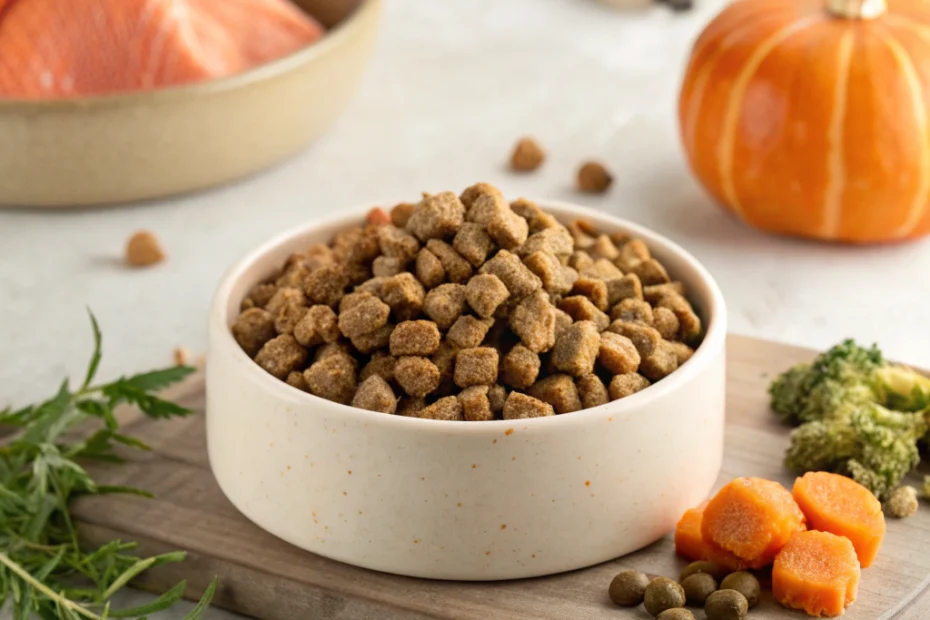At-a-Glance
As your cat ages, their nutritional needs change. Selecting the best food for senior cats can support their health and well-being. This guide will help you understand what to look for in senior cat food, how to ensure safety, and how to create an optimal feeding environment.
How to Choose
Choosing the right food for your senior cat involves understanding their specific dietary needs. Senior cats often require diets that are lower in calories but rich in essential nutrients. Look for foods that are high in protein and contain moderate fat levels to maintain muscle mass and energy levels.
Consider Nutritional Needs
Senior cats may benefit from foods that include omega-3 fatty acids, which can support joint health. Antioxidants like vitamin E and beta-carotene are also commonly used to support immune function. Additionally, fiber is important for digestive health, so consider foods that include sources like beet pulp or psyllium husk.
Check for Quality Ingredients
When selecting food, check the ingredient list for high-quality proteins such as chicken, turkey, or fish. Avoid foods with excessive fillers or artificial preservatives, as these can be harder for older cats to digest.
Consult with Your Veterinarian
Before making any changes to your cat’s diet, consult with your veterinarian. They can provide personalized recommendations based on your cat’s health status and dietary needs.
Safety & Setup
Ensuring the safety of your senior cat’s food involves proper storage and preparation. Always store dry food in a cool, dry place and seal it tightly to maintain freshness. Wet food should be refrigerated after opening and used within a few days.
Monitor Food Intake
Keep an eye on your cat’s eating habits. Changes in appetite can indicate health issues. If your cat is eating less or more than usual, consult your veterinarian.
Gradual Transition
When introducing a new food, do so gradually over a week to prevent digestive upset. Mix small amounts of the new food with the old, gradually increasing the proportion of the new food.
Core Pillars
The core pillars of a senior cat’s diet include balanced nutrition, hydration, and palatability. Ensuring these elements can help maintain your cat’s health and quality of life.
Balanced Nutrition
A balanced diet for senior cats includes the right mix of proteins, fats, carbohydrates, vitamins, and minerals. This balance helps support overall health, including muscle maintenance and organ function.
Hydration
Senior cats are prone to dehydration. Wet food can be a good option to increase water intake. Always provide fresh water and consider using a cat water fountain to encourage drinking.
Palatability
As cats age, their sense of smell and taste may diminish. Choose foods with strong aromas and flavors to entice them to eat. Warming wet food slightly can also enhance its appeal.
Placement & Environment Tips
The feeding environment can impact your senior cat’s eating habits. Ensure their feeding area is quiet and free from stressors. Place food and water bowls in an easily accessible location, especially if your cat has mobility issues.
Comfortable Feeding Area
Provide a comfortable feeding area with non-slip mats to prevent bowls from moving. Consider elevated feeders if your cat has arthritis or other joint issues.
Regular Feeding Schedule
Maintain a consistent feeding schedule to help regulate your cat’s digestion and metabolism. This routine can also provide a sense of security and predictability for your cat.
Comparison with Alternatives
When comparing senior cat food options, consider the benefits of wet versus dry food. Wet food can aid in hydration and is often more palatable, while dry food can be more convenient and help with dental health.
Wet Food
Wet food is typically higher in moisture content, which can help prevent dehydration. It is often more appealing to senior cats due to its texture and aroma.
Dry Food
Dry food can be beneficial for dental health by reducing plaque buildup. It is also easier to store and can be left out for longer periods without spoiling.
FAQs
Q: How often should I feed my senior cat?
A: Most senior cats benefit from being fed two to three times a day. Consult your veterinarian for specific recommendations based on your cat’s health and activity level.
Q: What signs indicate my senior cat needs a dietary change?
A: Look for signs such as weight loss, changes in coat condition, or decreased energy levels. If you notice these, consult your veterinarian for advice.
Q: Can I give my senior cat treats?
A: Yes, but choose treats that are low in calories and high in nutritional value. Treats should not make up more than 10% of your cat’s daily caloric intake.
What to Do Next
Now that you have a better understanding of the best food for senior cats, consider assessing your cat’s current diet. Take note of any changes in their health or behavior and consult your veterinarian for guidance. Remember, a well-balanced diet can play a crucial role in your senior cat’s overall health and happiness.
Disclaimer: Always consult your veterinarian for personalized advice regarding your cat’s health.
